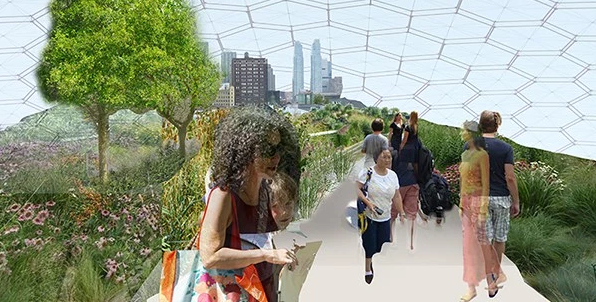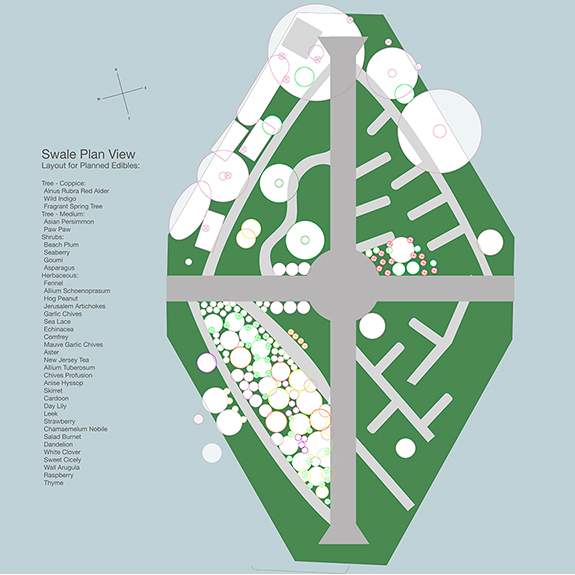 Students from my Advanced Sculpture classes, Andrew Hamill’s Sculpture Foundations class and Mary Mattingly’s Art and Urban Sustainability class at Rutgers-Camden, cam together for a day long workshop to design planters for the project Swale, which is an edible floating forrest created on top of submerged container freight boxes. A full project description is available here: https://www.swaleny.org/html/images.html
Students from my Advanced Sculpture classes, Andrew Hamill’s Sculpture Foundations class and Mary Mattingly’s Art and Urban Sustainability class at Rutgers-Camden, cam together for a day long workshop to design planters for the project Swale, which is an edible floating forrest created on top of submerged container freight boxes. A full project description is available here: https://www.swaleny.org/html/images.html
Andrea Peebles, from Advanced Sculpture, writes The edible Forest is a really old eco-system, it is called “Swale,” which is a mobile floating food forest that sit at the dock on the water. It is just a form of gardening that has really been around for a while, but we have gotten away from it. Except with this method, the plants are supported by each other. They sort of sustain themselves as one is planted, they build, they support, and keep sustaining each other. These floating food forest are helping us as well to get back to caring for our food which will in turn care for us. They are bringing us back together as a community to participate in the nurturing of our food source.
Peoples are interested in the floating food forest and by having concern or just curious about the project has brought many people aboard to see what they can do to help or they come to see how it works. Many people are concerned about our food sources and if they are healthy for us. These agro-ecosystems overtime will grow free fresh food. And that is what we need today without all the chemicals that are poisoning our food. So in the long run, Swale will be this huge eco-system platform that will be contained with healthy food. The plant layout is a wide variety of plants some examples are: Self-seeding annuals, tuber, endives, which contains kale, cilantro, and more the list is huge.

Emily Perry, from Advanced Sculpture, writes Rutgers Camden students supported the revolutionary Swale contemporary art project by designing boxes to be on the floating ecosystem. Swales infrastructure was discussed, including how the edible forest garden is assembled. Modules were shown further explaining water collection, how modular garden bed structures are created, purifying systems, etc. By collaborating together to build planters to support Mattingly, not only have students gained an understanding of foreign elements, Swale as an art project, and an introduction to newfound environmental concerns, but should most importantly be proud. Innovations are indeed created and executed through globalization.
Sev Salas, an Advanced Sculpture student, writes about the projects orientation toward abandoned houses and thee applicability of these ideas to the city of Camden here: https://dustxs.wordpress.com/2016/02/22/swale/